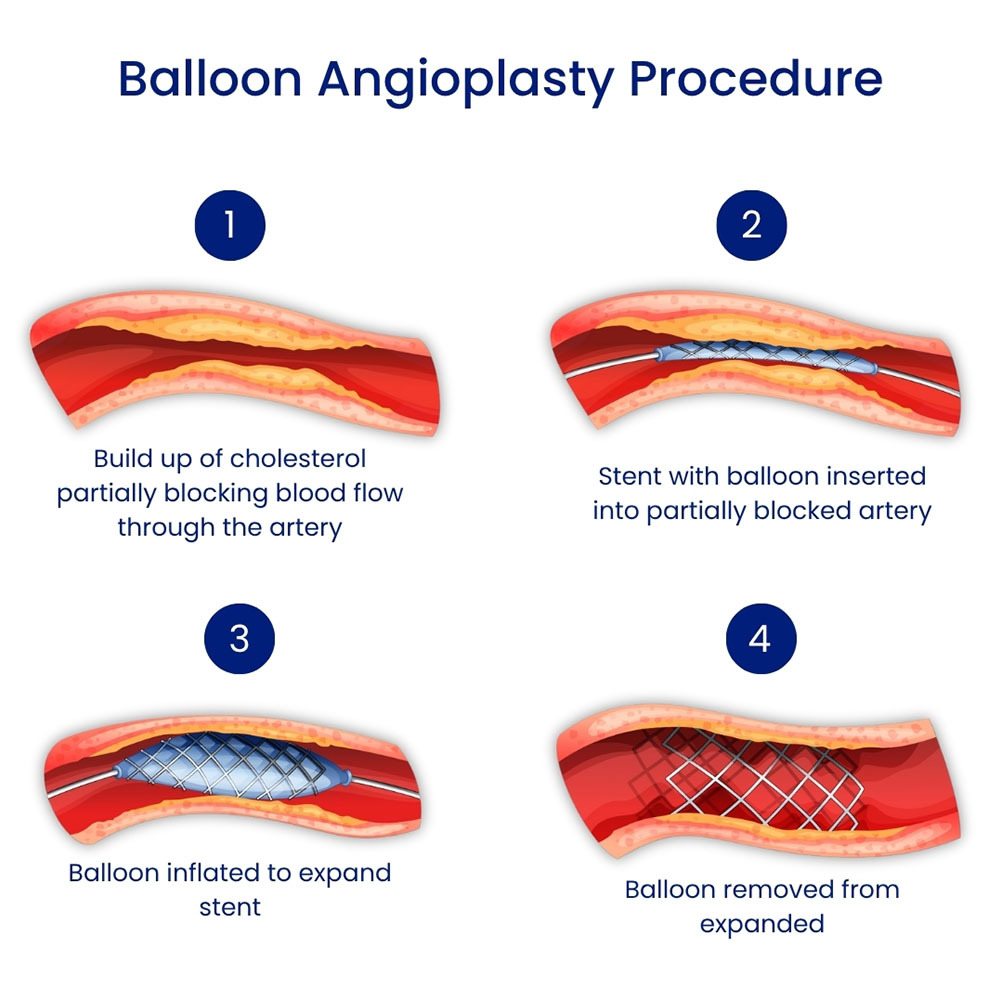A balloon angioplasty is a common procedure performed on a regular basis by your experienced NYC doctor at the Downtown Vein & Vascular Center. In Brooklyn, Dr. Sergei Sobolevsky has a superb reputation for successfully clearing blocked arteries using this important component of angiography, among many others. For the best vein and artery care in New York City, call the expert for an initial consultation.
What Is an Angioplasty?
An angioplasty is a procedure that’s done to improve blood flow in arteries that are narrowed or blocked. You may be familiar with this term because it’s well known in the context of coronary artery interventions. If an artery becomes blocked due to a plaque build-up, a leg or heart or any other organ may not receive adequate amount of blood supply.

Atherosclerosis is another name for plaque buildup, and this condition can affect blood vessels anywhere in the human body. A peripheral artery disease, atherosclerosis develops when arteries of your lower extremities receive inadequate blood flow. The skilled doctor at the Downtown Vein & Vascular Center in Brooklyn has extensive experience treating vein and artery conditions with procedures that include:
- Balloon angioplasty
- Atherectomy
- Recanalization
- Revascularization
When Is an Angioplasty Recommended?
Angioplasty may be done when arteries need to be widened to allow blood to flow through vessels more efficiently. A doctor may recommend angiography with angioplasty for a variety conditions including:
- This term refers to chest pain caused by reduced blood flow to the heart due to atherosclerosis of the coronary arteries.
- Heart attack. When you have a heart attack, an angioplasty may be done to open a blocked artery and prevent further damage to the heart.
- Peripheral artery disease. An angioplasty can treat atherosclerosis in the arteries of your legs, feet, arms and pelvis.
Individuals who have atherosclerosis and have tried lifestyle changes and medication, but haven’t shown improvement, may benefit from an angioplasty as part of an endovascular treatment of peripheral artery disease.
Dr. Sobolevsky treated my varicose veins with great success. I couldn’t be happier with the results. He was professional, kind, and answered all my questions. I highly recommend Dr. Sergei for anyone seeking vein treatment.
What Happens During an Angioplasty Procedure?
An angioplasty procedure is a minimally invasive procedure. Before the procedure, your care team provides you with a list of steps you may need to undertake in to be prepared for a procedure, such as:
- Not eating or drinking anything for at least eight hours prior to the procedure
- Letting your doctor know about all medications you’re taking, including supplements and over-the-counter medications
- Discontinuing certain medications
During an angiography and angioplasty, you’re given medication to relax, but you’ll remain awake. The duration of the procedure varies based on the number of blockages you have. Some things to expect include:
- Vital signs are monitored during the procedure, such as your blood pressure, heart rate and blood oxygen level.
- The procedure is done through an artery in your arm, groin or foot. The area of arterial access is numbed with a local anesthetic.
- A series of thin catheters and guidewires are inserted into the artery.
- Your Brooklyn doctor uses live x-ray video imaging to navigate catheters and wires through the artery.
- Contrast dye and an intra-arterial or intra-venous ultrasound are used to help the doctor see anatomy of the blockages.
- During the procedure, you should tell your doctor if you experience nausea, sweating, itching, difficulty breathing or heart palpitations.
- You may feel pressure or mild discomfort, but shouldn’t feel pain.
A small balloon is inflated at the site of the blockage, which widens the artery and pushes the blood clot to the sides of the artery, allowing more room for blood to flow. Once the artery has been widened sufficiently, the balloon is deflated, and the catheter is removed.
A stent may or may not be used during your angioplasty procedure. A stent is an expandable metal mesh coil, which may be coated with medication to prevent the formation of blood clots. After the artery has been widened, a stent may be placed in the area to stop the artery from narrowing again.
What Happens after an Angiography and Angioplasty?
You can expect to stay at the outpatient center for one-to-three hours after the procedure before going home for recovery, where:
- You’ll stay in bed flat on your back for an hour or two.
- A nurse monitors your blood pressure and pulse, as well as sensations.
- The nurse tells you when you can get up, and you’ll get help to sit up and stand.
When your doctor decides you’re ready to go home, you receive additional instructions. These may include:
- Planning to rest and drink plenty of fluids
- Watching for unusual pain, swelling or bleeding at the insertion site
- Keeping the area clean and dry
- Avoiding strenuous activities for a period of time
Following the procedure, your doctor may prescribe blood-thinning medications to reduce the chance of blood clots forming. Follow your doctor’s instructions closely. When you need a surgical or minimally invasive procedure for a vein or artery condition, you need to know that you’re in the hands of highly skilled and experienced Vein and Vascular Specialist. In Brooklyn, your best choice is the Downtown Vein & Vascular Center. Contact the Vein and Vascular Specialist today to schedule a consultation.
Downtown Vein Treatment Center
480 Court Street, Ste 101
Brooklyn, NY 11231
(718) 787-5559


